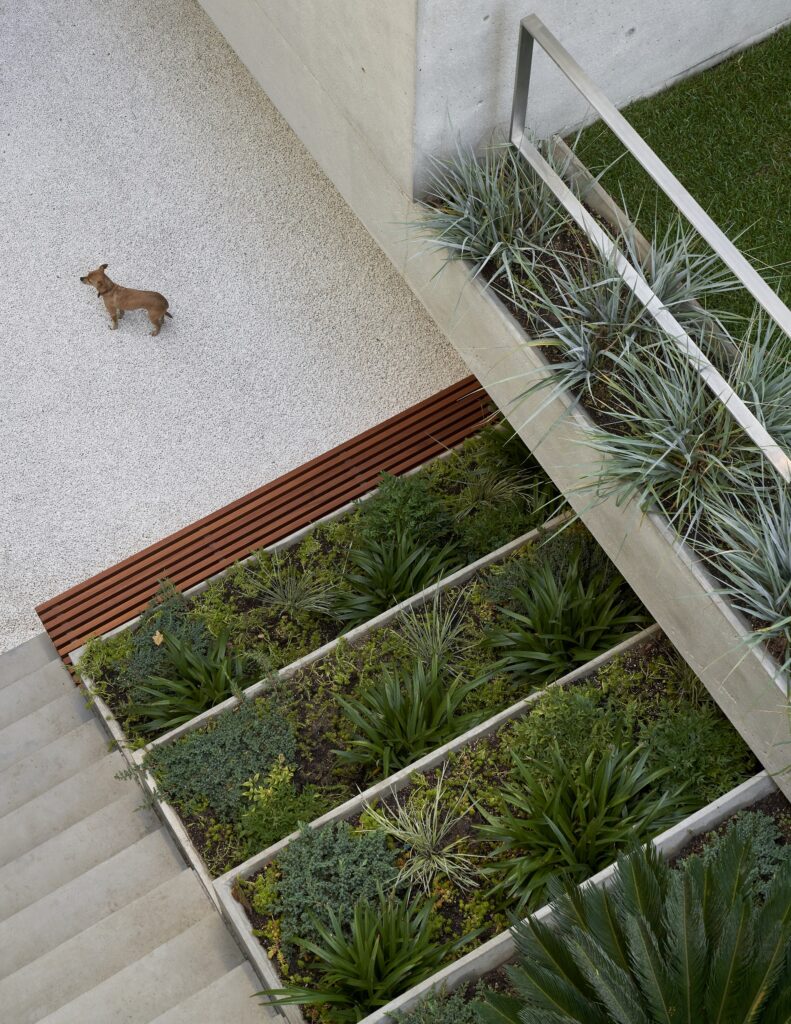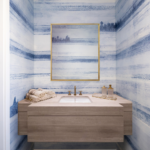Turning the notion of inside-outside upside-down, David Montalba makes you look down when you arrive at the street-level entrance to the Edward Durell Stone building on Wilshire Boulevard—a graceful stack of airy white arches that sit on slim legs. His Santa Monica-based practice was chosen to restore the façade, interior lobbies, and common areas of the eight-story commercial structure. The design included dropping a sunken garden with a single tree into the basement, a gesture in keeping with his interest in biophilic design.
“There was originally a large fountain on the plaza level that had seen better days,” wrote Montalba in an email interview. “The decision to restore the plaza but have a larger impact led us to remove it and recess a sunken garden into the old basement, invigorating it with natural light and a strong connection with nature.”
“We did want to remain true to the plaza, so we custom-fabricated a sculpture that will surround the sunken garden—creating a new visual focal point on the ground level exterior. The landscape architect we collaborated with, OBJ, understands regionalism while respecting place and the impact of landscape on interiors.”
Biophilic design is rooted in sustainability

Montalba uses a similar approach to biophilic design in residential spaces, using what he refers to as trophy trees. These solitary sculptural trees work as architectural elements. They also contradict the notion that biophilic design always requires a riot of greenery.
Softening the line between indoor/outdoor
“When we envision this blur between indoor and outdoor we aren’t just speaking of greenery, but both the soft and hard scape and how elements work together to bring nature into a fabricated space,” says Montalba. “We create courtyards that fold into the home with selective landscape, whether it be a singular tree or cascading greenery.”
“Often being sparing about the use of trees in the landscape can have more impact,” he noted. “Andrea Cochran, based in San Francisco, is a landscape architect we work with—we truly admire her curated sensibility in sculptural landscapes.”
In biophilic design, plantings are chosen for their suitability to specific location, lighting, and soil conditions, which also makes maintenance easier.
At right, a handsome example of stepped plants that are suited to the local environment, and which soften an outdoor staircase structure.






